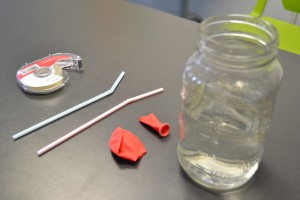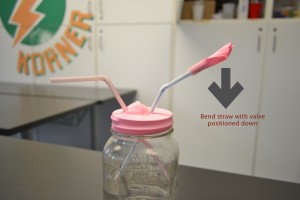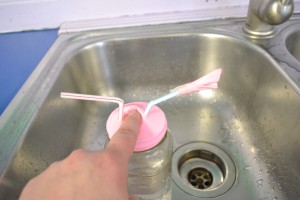Have you been helping make Valentine cards for someone special (or the kids in your son or daughter’s playgroup)? Do you cross your heart when making a promise? Have you recently danced to Katy Perry’s “Teenage Dream” in the car? Have you noticed that hearts are everywhere?!
A long time ago, people thought emotions came from the heart, probably because the heart beats faster when a person becomes scared or excited.
Today, we know that emotions come from the brain, and in this case, the brain tells the heart when to speed up or slow down as a reaction to being scared or excited. But since Valentine’s day is quickly approaching, we thought it would be a perfect time to talk about the heart!
In this issue of Let’s Discover, we will explore the heart in simple terms to help you explain how the heart works to your curious little one(s). You’ll also find an easy at-home activity to provide a fun, hands-on learning experience as you go. Let’s get started!
First of all, the heart is actually a muscle! It’s located a little to the left of the middle of your chest and it’s about the size of your fist. There are lots of muscles all over your body, in the arms, legs, back, and in even the “behind”. But the heart muscle is particularly special because of what it does. The heart pumps blood to the entire body, which in turn provides the body with the oxygen and nutrients it needs to stay alive. It also helps carry waste away our body doesn’t need. Your heart is sort of like a pump, or two pumps in one. The right side of the heart receives blood from the body while the left side of the heart does the exact opposite: It receives blood from the lungs and pumps it out to the rest of the body.
You might find it easier to describe the heart to children by doing a hands-on activity. In this Let’s Discover experiment, we will be making a model of the heart to demonstrate how a heart pumps blood throughout the body.
At-home Heart Pump Experiment:
Materials
- Wide mouth jar (plastic)
- Balloons
- Skewer
- Two (2) flexible straws
- Scissors
- Tub or pail to collect water spills
- Sponge
Procedure
- Fill the jar half full of water. Cut the neck off of the balloon and stretch the balloon over the mouth of the jar so it fits tightly. Save the neck of the balloon for use in step three. With the skewer, poke two small holes into the stretched balloon, about 2 cm apart.
- Carefully insert a straw through each hole in the balloon. The straws should fit snugly. If there are gaps between the straws and the balloon, start over with a new balloon.
- Use the neck from the balloon to make a valve. The valve goes on the end of one straw as a flap. Secure lightly with tape. Bend down the straw with the balloon valve (see diagram). Place the jar in a tub or pail.
- Push and release the balloon stretched over the jar several times.
Can you get water to move through the straws? In what direction does the water move? You have just simulated the hearts’ pumping action! How cool!
Extensions
- Study illustrations of the heart. Discuss what the similarities between the heart and the pump you assembled?
- Remove the balloon flap (valve) from the apparatus. Describe what happens?
- Does the valve affect how well the water flows?
- Can you think of other examples of valves and pumps?
And to discover more about the heart and love this Valentine’s Day, join us at Discover Love – our adults-only event full of unique, fun and love-themed activities. Tickets only $10!
For more great things to discover – visit the Discovery Centre on Barrington Street in Halifax, check out their website or join them on facebook.






